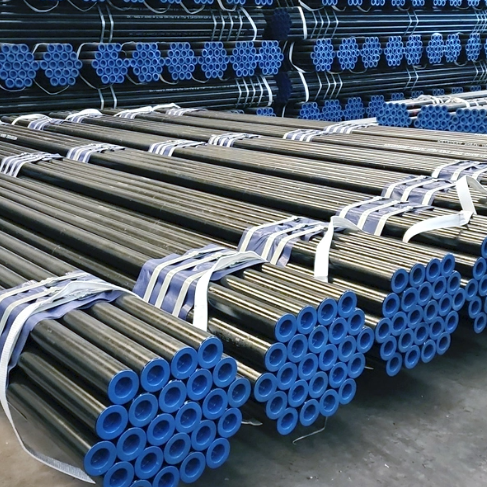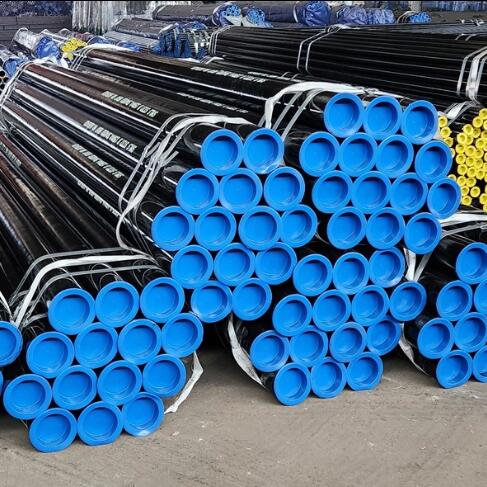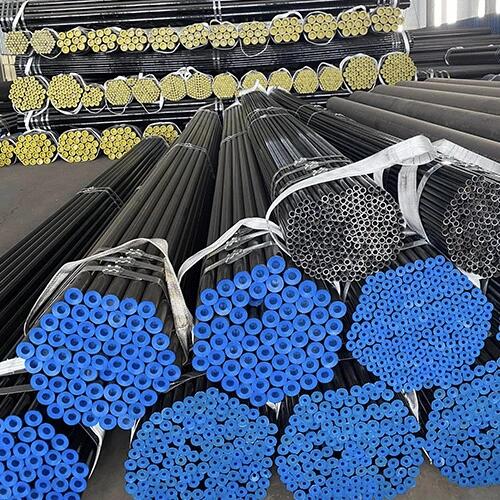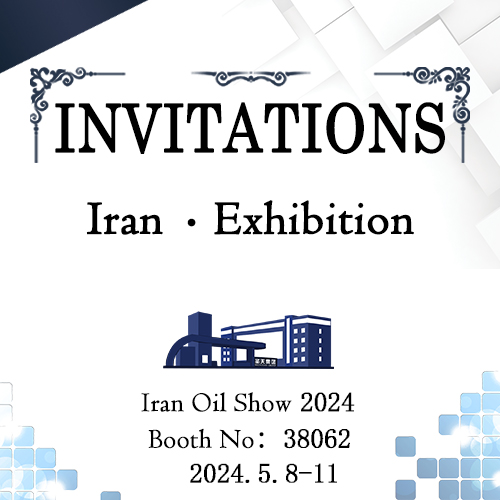According to the steel pipe manufacturer, during the pre-welding operation of API 5L Gr.B longitudinal submerged arc welded steel pipes. Defects such as misalignment, overlapping back welds, burn-through, pores, spatter, and poor weld formation often occur.
1. Misalignment: When the entire or half of the API 5L Gr.B longitudinal submerged arc welded steel pipes blank shows misalignment exceeding the tolerance, it is generally due to:
(1) Inadequate adjustment of the mouth seam (the seam is biased towards one side);
(2) The adjustment of the joint pressure roller is not in place (the circumferential angle of the pressure roller is incorrect, or the left and right pressure rollers are asymmetric with the centerline of the pipe blank as the axis, or the radial elongation of the relative pressure rollers is inconsistent), and there is no rounding;
(3) The pre bending edge was not pre bent in place, resulting in the presence of straight edges on the board edge.
2. Back weld nodules and burn through: The causes of back weld nodules and burn through are generally:
(1) If the seam is not tight, it is also possible that the hydraulic system pressure is too low;
(2) Poor molding and large roundness deviation;
(3) Improper selection of pre welding process parameters requires a certain welding current and arc voltage to be matched with an appropriate welding speed. Excessive linear energy or low welding speed can easily cause back weld nodules and burn through.
3. Pores: Pores in pre welded seams cause internal defects in both internal and external welds. The formation of pores in pre welded seams is generally due to:
(1) Poor quality of protective gas, such as containing moisture, insufficient pressure and flow rate, etc;
(2) Partial blockage of the welding gun, uneven formation of protective gas hood, and mixing of harmful gases;
(3) Caused by rust, oil stains, etc. on the slope.
4. Splash: Splash during pre welding can easily burn the surface or groove of the steel pipe and is difficult to remove, thereby affecting the welding quality and the quality of the outer surface of the steel pipe. The main reason for splashing is that the composition of the protective gas is incorrect or the process parameters are incorrect. The proportion of argon in the protective gas should be increased.
The above is an introduction to common problems in the pre welding technology of API 5L Gr.B longitudinal submerged arc welded steel pipes. Longitudinal submerged arc welded steel pipes are widely used in the fields of long oil and gas pipelines and outdoor construction. As long as the pre welding, welding, and testing techniques are qualified, longitudinal submerged arc welded steel pipes can be used with confidence.
 What is the processing allowance of API 5L seamless steel pipes?
What is the processing allowance of API 5L seamless steel pipes?
 In what engineering are small diameter seamless steel pipes used?
In what engineering are small diameter seamless steel pipes used?
 Which Material is Used for ASTM standards Boiler Pipes?
Which Material is Used for ASTM standards Boiler Pipes?
 Shengtian Group will go to Iran to participate in the oil and gas exhibition
Shengtian Group will go to Iran to participate in the oil and gas exhibition